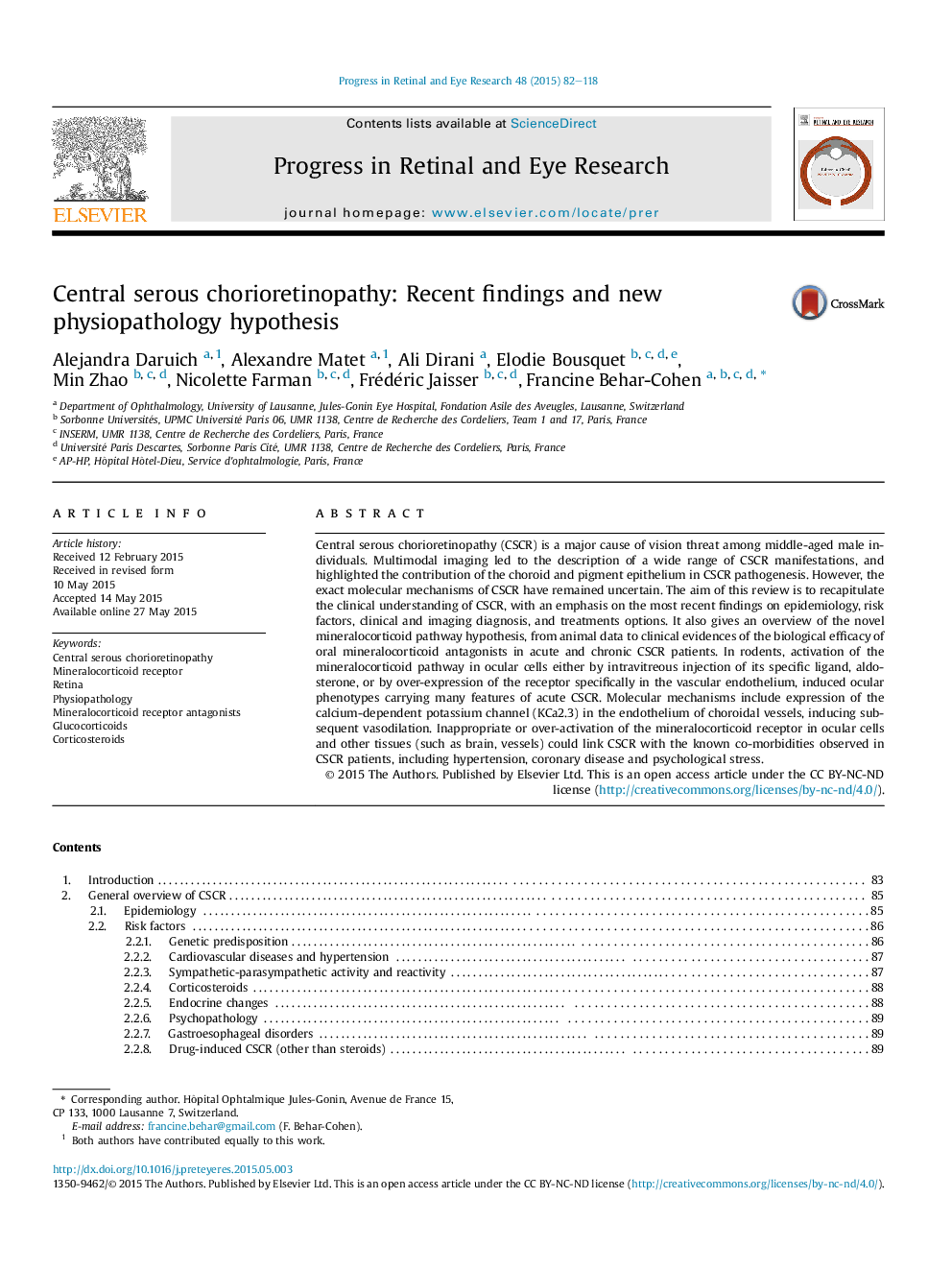| Article ID | Journal | Published Year | Pages | File Type |
|---|---|---|---|---|
| 6202723 | Progress in Retinal and Eye Research | 2015 | 37 Pages |
Central serous chorioretinopathy (CSCR) is a major cause of vision threat among middle-aged male individuals. Multimodal imaging led to the description of a wide range of CSCR manifestations, and highlighted the contribution of the choroid and pigment epithelium in CSCR pathogenesis. However, the exact molecular mechanisms of CSCR have remained uncertain. The aim of this review is to recapitulate the clinical understanding of CSCR, with an emphasis on the most recent findings on epidemiology, risk factors, clinical and imaging diagnosis, and treatments options. It also gives an overview of the novel mineralocorticoid pathway hypothesis, from animal data to clinical evidences of the biological efficacy of oral mineralocorticoid antagonists in acute and chronic CSCR patients. In rodents, activation of the mineralocorticoid pathway in ocular cells either by intravitreous injection of its specific ligand, aldosterone, or by over-expression of the receptor specifically in the vascular endothelium, induced ocular phenotypes carrying many features of acute CSCR. Molecular mechanisms include expression of the calcium-dependent potassium channel (KCa2.3) in the endothelium of choroidal vessels, inducing subsequent vasodilation. Inappropriate or over-activation of the mineralocorticoid receptor in ocular cells and other tissues (such as brain, vessels) could link CSCR with the known co-morbidities observed in CSCR patients, including hypertension, coronary disease and psychological stress.
